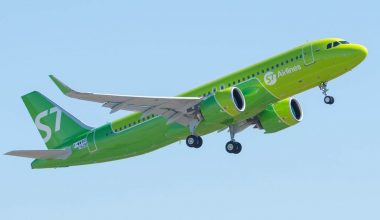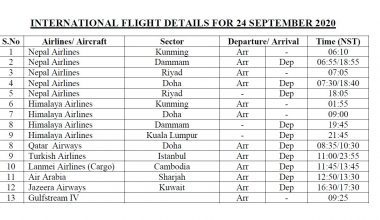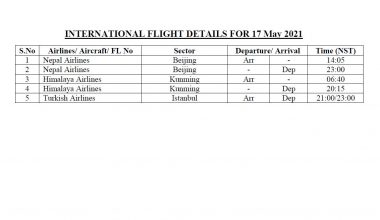On September 14, Nepal Airlines- the state-owned flag carrier of Nepal, released a dry-lease notice, inviting the national and international carriers with a valid air operator’s certificate to submit a sealed proposal for the lease-out of its Chinese aircraft. After more than two years of grounding its fleet of 17-seater Y12E and 56-seater MA60 aircraft, the national carrier has finally decided to get rid of them and issued a notice to lease them out.
Nepal Airlines (RA) received six Beijing-made aircraft starting in 2014, four of which were purchased on concession loans, and two were gifts from the Chinese government. The arrival of four Harbin Y112Es and two Xian MA60s was expected to mark the beginning of a new era in Nepalese aviation. Still, the tables turned out when they became more of liabilities than valuable assets. These Chinese-made jets have logged more time on the ground than in the air and cost RA more money than what they brought in.
Also Read: NAC in negotiation with Bhutan Airlines to finalize wet lease agreement
Ever since these aircraft were first rolled out, they have been pushing debt-laden Nepal Airlines into a dire economic situation and vicious debt. Due to a lack of skilled human resources to fly and maintain Chinese aircraft, lack of spare parts, and lack of aircraft’s optimal performance, Nepal Airlines struggled to keep them airborne and bring revenue in.

On March 23, 2020, A Harbin Y12E registered 9N-AKU lost power in one engine and landed 60 meters short of Nepalgunj Airport’s runway without any human casualties. The plane was carrying five people: three crew members and two medical personnel onboard to Nepalgunj when it made a hard landing with one engine. As a result, the aircraft suffered damage and became unable to fly. The incident ignited the grounding of two types of Chinese aircraft several weeks later.
Currently, three Y12Es and two MA60s are in storage at the remote parking bay on the eastern side of Tribhuvan International Airport and gathering rust. Due to non-compliance with long-term storage procedures, corrosion has started appearing on the metal surfaces and components of the parked aircraft. As airplanes are prone to corrosion, it can cripple the structural integrity of metal aircraft and lead to serious safety hazards.
As per the notice released by Nepal Airlines, the carrier is now seeking dry-lease placements for its five Chinese turboprops. The sealed proposals for lease-out of these aircraft must be submitted on or before October 31, 2022. The carrier reserves the right to accept or reject the proposal and will ascertain the lease tenure of Y12Es and MA-60s by offers received.
Lease rate of five Chinese turboprops
In its Request for Proposals, Nepal Airlines has mentioned a power-by-the-hour lease rate per flight cycle and flight hour in addition to a minimum monthly fixed lease rate for five grounded aircraft. The minimum monthly lease rent is fixed as:
Aircraft Fixed Monthly Monthly FC Monthly FH
(USD) (USD) (USD)
9N-AKQ 78,097.66 700.88 562.82
9N-AKR 69,890.32 703.93 564.40
9N-AKS 29,416 80.06 119.36
9N-AKT 32,886.08 94.84 141.40
9N-AKV 33,785.01 101.36 151.12
In the process of dry-leasing the aircraft, Nepal Airlines will also offer a wide array of spare parts and tools together with Y12Es and MA60s. The carrier’s website mentions that all five parked aircraft at TIA are available for inspection on an ‘as-is, where-is basis. The eligibility criteria for airlines participating in the bidding process are a valid AOC and at least a single aircraft in their in-house fleet.
What next?
The owner of the planes, the Finance Ministry, gave permission to the flag carrier for the aircraft’s lease-out or sale in March 2021. Last year change in management made the decision to reactivate the fleet of MA-60s and Y12Es. Plagued by instability in top management, the course of action was dropped once again with the 2022 restructuring.
Following the Finance’s Ministry recommendation to either dry-lease or sell the aircraft, Nepal Airlines is proceeding with the first option. In case of no takers, the national airline will pursue the outright sale of these aircraft.
Regretting the decision
The twin-engine turboprop Y12E and turboprop-powered MA60 were anticipated to serve mountainous rural areas of Nepal, but their performance was not up to par. In fact, these planes weren’t suitable for Nepalese airspace. These planes joined the fleet of Nepal Airlines as a result of a government-to-government deal between Nepal and China. Guided by greed for commission, the suitability of aircraft performance to Nepalese topography and infrastructure wasn’t taken into account. Neither ground nor airborne Chinese aircraft gave relief to the carrier. The sooner these inefficient aircraft are leased out, the better it will be for ailing Nepal Airlines.






